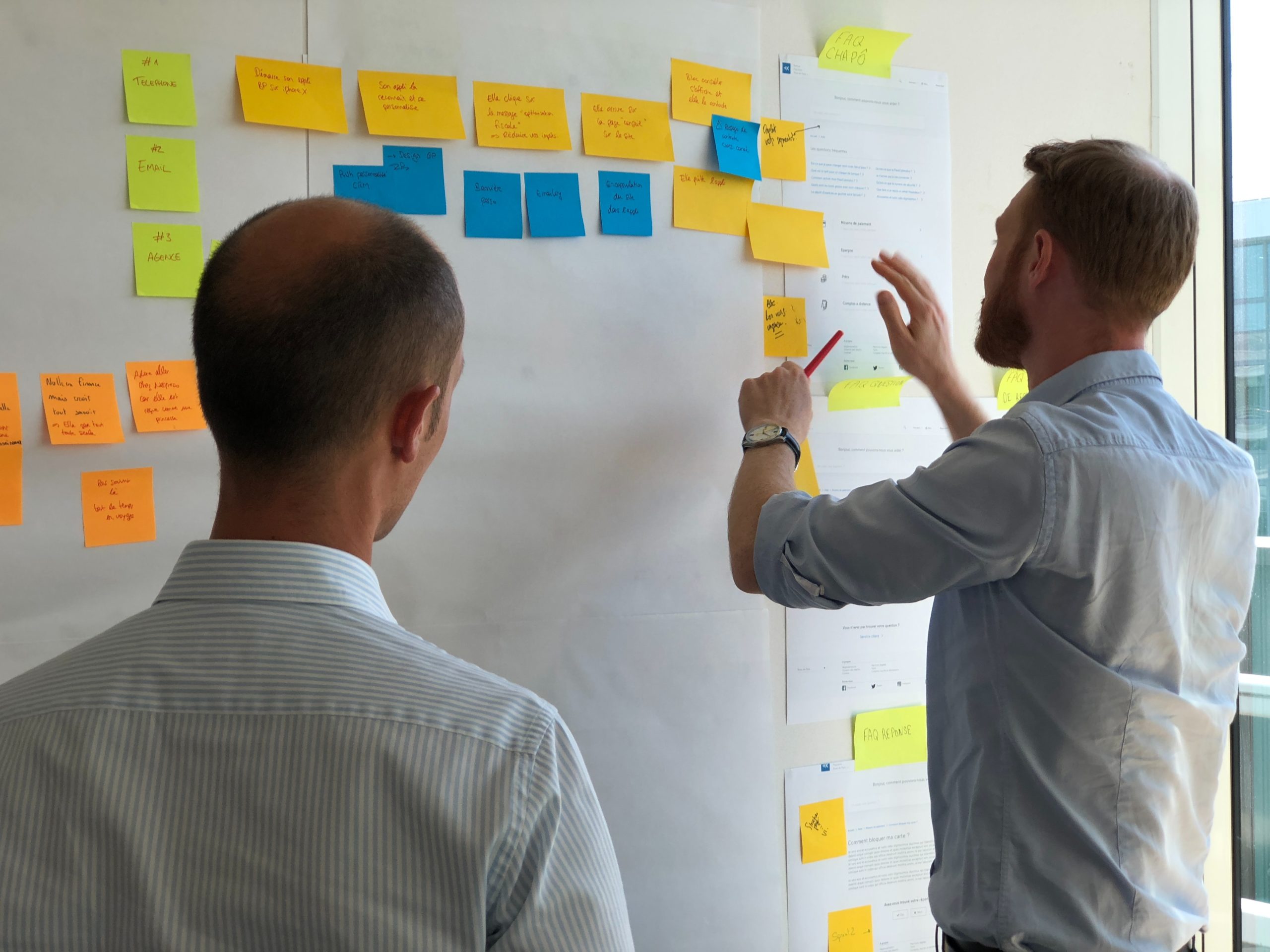Learning is not just about knowing more information. A successful learning experience is about creating habits so that learners can apply knowledge to action in the real world.
Being armed with the right information is an essential part of the learning equation, but learners also require the skills, motivation, and environment to perform tasks effectively at the end of a learning journey. As participants embark on a learning journey, each of these four factors play a significant role in how the audience will focus their attention and retain information:
- Knowledge: The right information to be successful
- Skills: The practice to perform a task well
- Motivation: The willingness to learn and accept change
- Environment: The support structures surrounding the learner
It is sales enablement’s job to make that journey from Point A (the learner’s current situation) to Point B (competence) as smooth as possible. To do so, practitioners need to consider where gaps in knowledge, skills, motivation, and environment exist and embed strategies that reduce those gaps in the learning design.
Knowledge
Often, learning experiences are designed to teach participants about something rather than how to do that thing. For knowledge to truly become expertise, learning experiences need to teach both of these types of knowledge: declarative and procedural. The book “Telling Ain’t Training” by Harold Stolivitch and Erica Keeps breaks down the differences between these:
- Declarative knowledge is the information about something, or simply that something is the case. For example, it may include the description of the historical background on a topic or the recollection of statistics – knowledge that can be verbalized.
- Procedural knowledge is the information that enables people to act and do things, such as riding a bike or navigating a database. It is often more implicit and cannot be easily explained, requiring someone to learn by doing.
On its own, declarative knowledge is incomplete; it needs to be coupled with procedural knowledge so that learners can logically apply information in the appropriate context to perform tasks effectively. Beyond telling learners the information they need to know, learning experiences need to include demonstration and practice of the actions they will need to do.
Often, the participants in a learning program will enter with a wide range of prior knowledge. For example in an onboarding bootcamp, one sales rep might have decades of experience in the industry while another might be fresh out of college. Or, a sales rep might have used a new tool at a previous company while others are being introduced to it for the first time. It’s important to be aware of those knowledge gaps – both declarative and procedural – and use the knowledge in the room to your advantage.
For example, consider the following methods to ensure the knowledge provided in the learning experience is valuable to everyone participating, regardless of their prior knowledge:
- Don’t make everything required for everyone. Allow people to test out of sections when it makes sense.
- Leverage existing expertise. Invite those with more knowledge and experience to mentor or coach novice learners.
- Get out of the way. Let participants complete assignments at their own pace, or jump ahead of the group if they are ready. Embed more detailed information for novice learners to access additional resources as they need it.
This approach helps give learners some autonomy while also encouraging collective knowledge sharing to bridge gaps faster and more effectively.
“Having that [learning] culture allows that knowledge gap to shrink because you’re going to have your more seasoned reps mentoring your younger reps,” said Hillary Anderson, sales enablement manager for mid-market and sales development at Slack. “Account executives are much more willing to work alongside your sales development reps and help them refine their skills if everyone acts like an owner.”
Skills
For knowledge to become skill, two things are essential: practice and feedback. If you toss a mountain of new information at your audience without giving them a vehicle to practice the concepts, it is like asking them to bike uphill. They can eventually get to the final destination, but the journey there will require them to exert a lot of additional effort.
By providing the structure for learners to practice skills and obtain feedback during a learning experience, sales enablement has more visibility into areas where people might be struggling and can better ensure that participants will leave the learning environment prepared to act in the real world.
When teaching someone how to drive, you don’t start by handing over the keys to your brand-new car and letting them take it for a joyride. You build up to that step incrementally throughout the learning process with classroom learning, written tests, low-risk practice drives, and tons of feedback from instructors. The same approach should be taken to build skills in the workplace.
“[The classroom] is definitely the first step, but then you put them in a car, in a simulator, hopefully with someone next to them to help them learn to drive in a safe environment,” said Penny Dakhil, sales enablement and project management consultant. “By the time they are actually on the road, they can drive well.”
When building practice into a learning curriculum, it should generally be dispersed throughout the entire program to help learners digest it in manageable chunks and ideally improve over time. It acts as building blocks to apply concepts as they are learned rather than expecting learners to recall everything at once. As Julie Dirksen points out in her book, “Design for How People Learn”, a good rule of thumb is to practice as often as the person will be expected to use the skill.
Along with that practice, ensure feedback processes are built into the curriculum so that learners can consistently see how well they are progressing. Feedback should be frequent, but it should also come in a variety of forms. For example, ask peers, managers, and cross-functional partners to participate in giving feedback, and specify the level of depth expected for different tasks. Providing explicit, standardized criteria for feedback can be a helpful tool to keep it constructive for the learner and easy for the observer to participate.
Motivation
While motivation to learn cannot be forced on someone, sales enablement can help reduce barriers in the design of learning experiences that would limit a participant’s motivation. People naturally resist change, and the very process of learning implies that change will occur by exposing people to information they did not previously have. Therefore, it’s important to embed sources of motivation throughout the learning experience to make the process more appealing.
There are two types of motivation sources: intrinsic, where people are interested in a topic for their own sake, and extrinsic, meaning people are interested in a topic due to a looming external reward or punishment. Learning is much more effective when people are intrinsically motivated rather than extrinsic, so consider ways you can show learners why the topic matters for them personally. This will happen in different ways for different people.
“Not everybody is motivated by winning, and not everybody is competitive,” said Tanya Kunze, CEO of SWIFT Coaching. “You get certain profiles that are motivated by being noticed, being recognized. You get certain profiles that are motivated by being part of the team.”
There are a few ways that you can address these at the start of a learning experience to pique learners’ interest. For example, give participants some control over what they learn (whether through topics, pace, format, etc.), leverage what they already know to create resonance, and share stories of success.
Also, consider where you might be able to remove roadblocks in the process through the design of the program. As you create a curriculum, ask yourself the following questions:
- Can I reduce any complexity?
- Are there any issues with the compatibility of the new information to the current situation?
- How can I convince people that the new concept is better?
- Is the impact of the new concept visible for the learners to see?
- Can the learners try the new concept for themselves?
While you can’t solve the entire motivation problem through design, you can take measures to encourage everyone to enter a new learning experience with a positive mindset.
Environment
Sometimes it isn’t the gaps in knowledge, skills, or motivation that make it difficult for people to learn, but the elements surrounding the learning experience. If an environment is stressful or unfamiliar, it can be distracting and cause learners to tune out new information.
“We know that the sales environment is an incredibly stressful environment,” said Kunze. “The more stressed we get, the more cortisol we produce, the more inattentional blindness we have, and the more we fail. We need to start looking at how do we…move them outside of that stress realm where they can actually start seeing the opportunities out there.”
Creating an environment that supports and empowers learners to grow is a core factor in the design of every learning experience.
Similarly, proximity between the learning environment and the real environment is key to improving the effectiveness of learning. When people learn in an environment that resembles the conditions where they will be expected to perform in the real world, it creates familiar contextual cues. This increases the likelihood that the mind will recall important information tied to those cues.
While it isn’t always possible to mimic the environment in learning scenarios, the following strategies can be helpful ways to mitigate environmental gaps:
- Utilize roleplays to simulate the environment
- Mix both in-person and digital training in, as sales reps will encounter both in their day-to-day
- Encourage on-the-job shadowing so learners can see new information in action
For learners to effectively develop the knowledge and skills needed to perform, they also need to be motivated to do so, with an environment that supports them. Each of these four factors are critical to how people accept new information and ultimately create habits.
The path from Point A to Point B in a learning journey can be a rough, uphill gravel road or smooth, flat pavement. By understanding the gaps that may exist in the road and taking measures to bridge them through design, sales enablement can ensure every learning experience is the latter.





